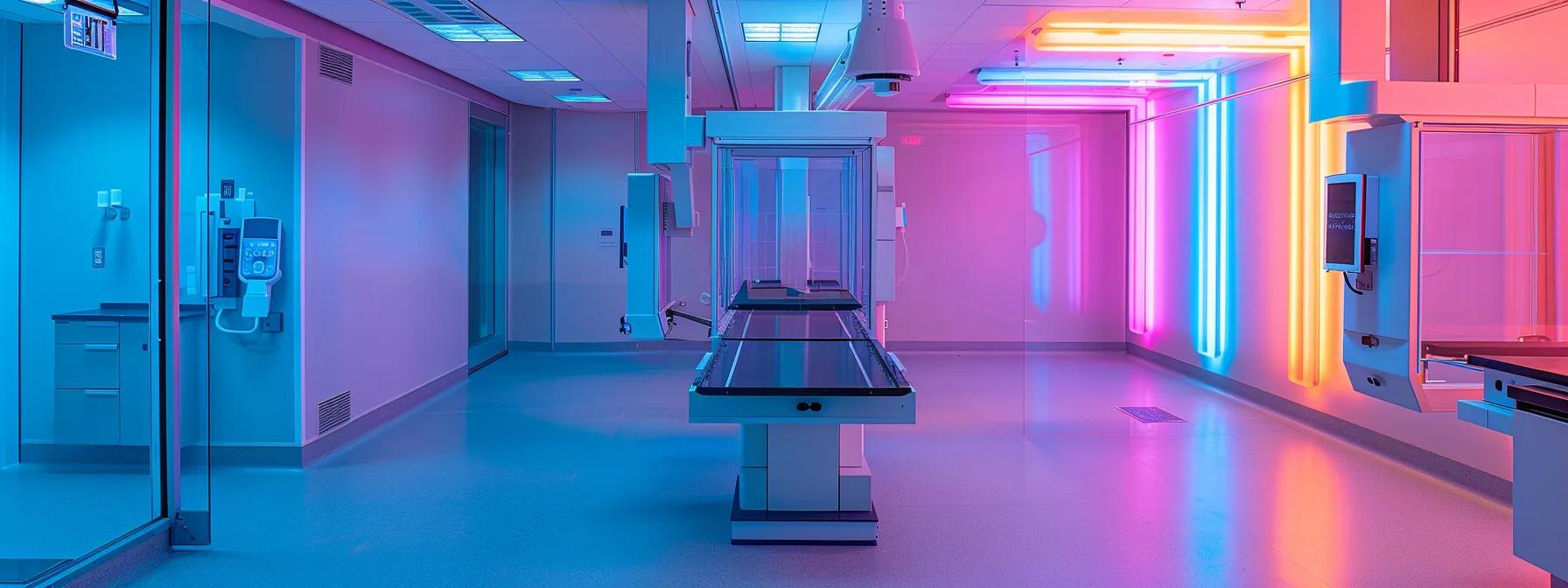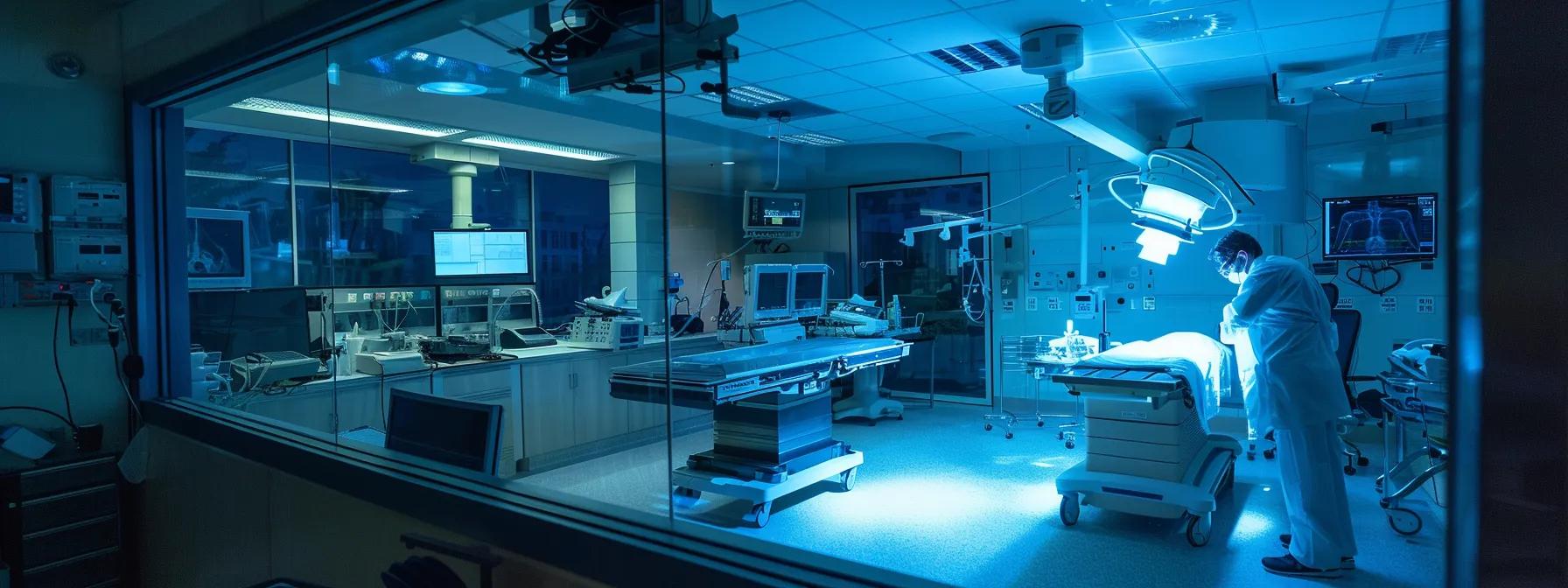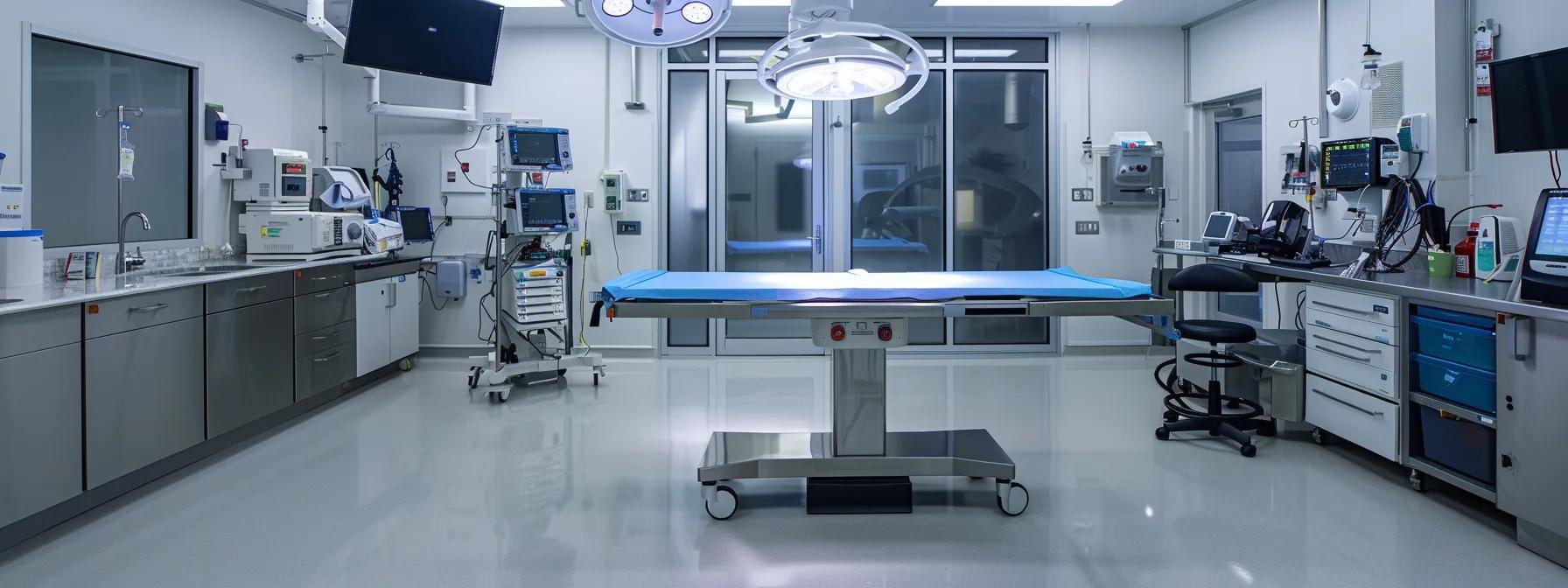The Role of Radiation Protective Lead Glass in Medical Settings
In the world of medical construction and design, ensuring protection against harmful radiation is not only a regulatory requirement but also a commitment to the safety of patients and staff. I have seen firsthand how radiation protective x-ray lead glass in healthcare environments significantly reduces exposure during diagnostic and treatment procedures. This article explains the importance, installation, and maintenance of lead glass in medical settings, including the integration of lead x-ray windows in imaging areas and the application of fire rated x-ray glass units in specialized zones for enhanced safety, while reviewing its applications in modern healthcare infrastructures. It will guide contractors and construction professionals in making informed decisions on adopting lead glass solutions.
We will now examine key topics including the importance of x-ray lead glass and its performance in radiation protection, the innovative design of lead-x-ray-windows for enhanced safety, best practices in installation and maintenance, its role in medical equipment featuring x-ray glass with integral blinds, its benefits in surgical settings, and emerging developments such as fire-rated-glass-units in this field.
Understand the Importance of Radiation Protective Lead Glass in Healthcare
Radiation protective lead glass defends staff and patients from X-rays and other ionizing radiation. Its ability to absorb and block high-energy radiation makes it essential in rooms with X-ray machines, CT scanners, and other imaging devices. Regulations require lead-lined walls, barriers, or windows that allow visibility while blocking radiation. This solution meets international safety standards and enhances workflow by allowing visual contact during procedures. Its transparency supports effective communication between radiologists and patients, making it indispensable in modern healthcare facility design.
Analyze the Types and Features of Protective Lead Glass

Protective lead glass comes in various types, each tailored for specific radiation protection needs. Key characteristics include lead content, thickness, and clarity, which determine its effectiveness.
Types and Features:
- High-Lead Content Glass – Contains up to 70% lead oxide for superior shielding in areas with extremely high radiation.
- Standard Lead Glass – Around 50% lead, balancing radiation absorption and cost, ideal for general diagnostic rooms.
- Fire-Rated Glass Units with Lead – Combines lead glass with fire-resistant properties to manage both radiation and fire hazards.
- X-Ray Glass With Blinds – Integrates blinds for light control and privacy while blocking X-rays, used in patient rooms and diagnostic areas.
- Customized Lead Glass Panels – Tailored in non-standard sizes or shapes to fit unique architectural layouts while providing the same protection.
Advanced production techniques ensure these glasses have uniformity, structural integrity, and durability. Laboratory tests show that higher lead oxide percentages can reduce radiation transmission by over 90% compared to regular glass.
Examine the Radiation Safety Regulations in Medical Settings
Medical facilities must comply with strict radiation safety regulations set by agencies like the ICRP and NRC. These regulations mandate protective barriers and regular maintenance of shielding materials. Guidelines from ANSI and NCRP specify the minimum lead shielding requirements for walls, doors, and windows facing radiation-producing equipment.
Ongoing inspections, equipment calibration, and radiation dose reviews help maintain compliance and foster a culture of safety. Many healthcare facilities also include staff training and regular audits by certified radiation safety officers to ensure that lead glass installations continue to perform optimally and reduce long-term exposure risks.
Identify Common Medical Applications of Lead Glass

Lead glass is used wherever radiation exposure is a risk. In radiology and diagnostic imaging rooms, fortified windows allow physicians to observe patients without direct exposure to harmful radiation. In radiation therapy rooms, strategically placed lead glass panels protect non-target tissues and staff. In surgical suites, especially where intraoperative imaging is used, lead glass maintains a safe environment while allowing surgeons to monitor procedures.
Additional applications include mobile radiography units, diagnostic pods, patient waiting areas, and control rooms. In each case, lead glass provides necessary radiation protection without compromising visibility, mobility, or design aesthetics.
Discover How Lead Glass Shields Against Radiation Exposure
The primary effectiveness of lead glass comes from its composition. By replacing a portion of silica with lead oxide, glass becomes denser and increases its refractive index while remaining transparent. The high atomic number of lead means more electrons are available to interact with and absorb incoming radiation.
Explain the Composition and Properties of Lead Glass
Lead glass is made by incorporating lead oxide into the glass matrix, which enhances both density and optical clarity, making it suitable for healthcare environments that require constant patient monitoring.
Discuss Lead Glass Thickness and Its Effectiveness in Shielding
Thicker panels offer greater radiation attenuation. Common thicknesses range from 2 mm to 10 mm of lead equivalence. For example, a 3-mm lead equivalent can reduce radiation by up to 85%, and a 5-mm equivalent by over 95%. This balance of thickness and transparency ensures effective shielding without compromising design.
Review Studies Illustrating Lead Glass Performance in Clinics
Studies have shown that properly installed lead glass can reduce radiation exposure to adjacent areas by nearly 90%. Regular maintenance and proper installation have been key factors in ensuring consistent performance in clinical settings.
Learn About the Installation of Radiation Protective Lead Glass

Proper installation is critical to the long-term performance of lead glass. The process begins with detailed site assessments, measurement, and planning by qualified professionals.
Detail Preparation Steps for Installing Lead Glass in Facilities
A thorough evaluation of room layouts, radiation sources, and structural support is required before ordering custom-sized panels. Collaboration among architects, radiation safety experts, and engineers ensures specifications and regulatory requirements are met.
Outline Best Practices for Proper Lead Glass Placement
Panels must be installed flush with walls and securely framed to prevent gaps. Resistant hardware and sealants are used to maintain integrity, and periodic inspections ensure there is no degradation of the lead content.
Highlight Maintenance Tips for Longevity of Lead Glass Panels
Regular non-abrasive cleaning and inspections for cracks or edge deterioration are essential. Re-certification of shielding performance is recommended to promptly address any wear or damage, ensuring the panels continue to protect staff and patients.
Explore the Role of Lead Glass in Various Medical Equipment
Lead glass plays a key role in protecting users of various medical equipment. Its use in X-ray machines and imaging devices ensures that operators can safely monitor procedures through protective windows.
Review Lead Glass Usage in X-Ray Machines and Imaging Devices
In X-ray machines, lead glass protects viewing panels and windows, significantly reducing scattered radiation and keeping both operators and patients safe.
Investigate Lead Glass Applications in Radiation Therapy Rooms
In radiation therapy, lead glass constructs viewing windows and barriers to minimize radiation leakage and protect surrounding areas, an essential element backed by real-world data.
Assess the Impact of Lead Glass on Operator and Patient Safety
By allowing continuous observation through a radiation shield, lead glass ensures safe communication between operators and patients. This dual function helps maintain a controlled environment during both diagnostic and therapeutic procedures.
Evaluate the Benefits of Lead Glass in Surgical Environments

In operating rooms, the safety of the surgical team and patients is paramount. Lead glass is vital, particularly during procedures that involve mobile C-arms or portable X-ray machines.
Discuss How Lead Glass Contributes to Surgical Team Safety
Installations in surgical suites protect operating teams from unintended radiation while ensuring clear visibility during procedures. Studies indicate that lead glass barriers significantly reduce radiation doses among staff.
Analyze the Role of Lead Glass in Protecting Patients During Procedures
For procedures requiring real-time imaging, lead glass allows for continuous monitoring while protecting patients from stray radiation. This is especially critical in delicate surgeries where precision is essential.
Identify Features Enhancing Visibility Through Lead Glass Barriers
Modern lead glass is designed to maximize clarity with minimal distortion. Anti-reflective coatings further enhance visibility, ensuring that key details are not lost during high-pressure procedures.
Understand Future Developments in Radiation Protective Lead Glass Tech
Advancements in material science and changing safety standards are driving innovations in lead glass technology. These developments aim to improve performance, durability, and ease of installation while reducing maintenance needs.
Explore Advancements in Lead Glass Materials and Technologies
Research is focused on incorporating alternative heavy metal oxides and nano-engineered composites to create thinner, lighter panels that still offer high levels of radiation protection.
Discuss Potential Innovations for Improved Safety in Medical Settings
Future systems may include integrated sensors to monitor radiation levels in real time. Such smart lead glass could alert maintenance teams to any compromise in shielding integrity, blending seamlessly with facility management systems.
Examine Research Trends Shaping the Future of Lead Glass Use
Ongoing studies are refining standards for radiation protection. Collaborative research among universities, industry experts, and healthcare institutions is expected to lead to lead glass installations that are more adaptive and responsive to emerging safety needs.
Detailed List of Protective Lead Glass Features
Below is a list of key features and benefits of radiation protective lead glass in medical settings:
-
High Radiation Attenuation – Exceptional Shielding Efficiency
Absorbs up to 95% of harmful radiation, reducing exposure in high-risk medical areas. -
Enhanced Optical Clarity – Superior Visibility and Safety
Maintains excellent transparency, allowing clear patient monitoring and accurate imaging. -
Customizable Thickness – Tailored Protection for Specific Needs
Enables optimization between effective shielding and visual clarity. -
Durability and Longevity – Extended Lifespan Under Harsh Conditions
Engineered to withstand daily use in busy facilities with minimal maintenance. -
Regulatory Compliance – Meeting Global Safety Standards
Manufactured to meet standards set by ICRP, NCRP, and ANSI, ensuring reliable protection.
Comparison Table: Lead Glass Features and Benefits in Healthcare
Before reviewing the table, note that it summarizes key aspects of various lead glass products and their suitability in different healthcare settings.
| Feature | Lead Content (%) | Effective Shielding (%) | Application Area | Key Benefit |
|---|---|---|---|---|
| High-Lead Content Glass | Up to 70% | 95% | Radiology Rooms | Maximum protection against high doses |
| Standard Lead Glass | Around 50% | 85% | General Diagnostic Areas | Cost-effective shielding |
| Fire-Rated Glass Units with Lead | 50–60% | 90% | Operating and Waiting Areas | Dual protection against fire and radiation |
| X-Ray Glass with Blinds | 50–70% | 90% | Patient Rooms/Imaging Suites | Balances light control and safety |
| Customized Lead Glass Panels | Variable | 85–95% | Tailored Healthcare Designs | Designed to fit unique architectural needs |
This table shows that selection depends on application, with lead content and thickness directly affecting protective performance.
Insight Table: Installation Best Practices for Lead Glass
Below is a table summarizing best practices for the installation and maintenance of radiation protective lead glass.
| Stage | Key Activities | Best Practice | Outcome |
|---|---|---|---|
| Preparation | Site assessments, structural evaluations | Custom measurement | Tailored glass fitting |
| Installation | Secure mounting, proper sealing, flush placement | Use high-durability hardware | Robust, gap-free radiation barrier |
| Inspection & Testing | Periodic checks, certification/re-certification | Regular maintenance schedule | Sustained performance and safety |
| Cleaning & Maintenance | Non-abrasive cleaning, chemical cleaning agents | Use approved glass cleaners | Prolonged glass life and clarity |
| Upgrading & Monitoring | Integration of sensor technology | Smart system integration | Real-time performance monitoring |
This table outlines critical installation steps and practices that help maintain the protective features of lead glass over time.
Frequently Asked Questions
Q: What makes radiation protective lead glass different from regular glass?
A: It contains lead oxide, which increases its density and ability to absorb harmful X-rays and gamma rays while maintaining clarity suitable for medical environments.
Q: How do I determine the proper thickness of lead glass for my facility?
A: The required thickness depends on the radiation type and intensity. A qualified radiation safety consultant can assess your facility and recommend a thickness ranging from 2 to 10 mm of lead equivalence.
Q: Are there maintenance requirements for lead glass panels?
A: Yes. Regular cleaning with non-abrasive agents, periodic inspections for damage, and re-certification of shielding performance are essential to ensure continued protection.
Q: Can lead glass be customized for unique architectural designs?
A: Absolutely. It can be manufactured in various sizes, shapes, and configurations to meet specific design requirements without compromising safety or aesthetics.
Q: What regulatory standards apply to lead glass in medical settings?
A: Lead glass must comply with international safety standards set by bodies such as the ICRP, NCRP, and ANSI, ensuring effective radiation attenuation and construction quality.
Q: How does lead glass enhance operator safety in medical equipment?
A: By incorporating lead glass into viewing panels and protective barriers, operators can monitor procedures without direct exposure, significantly reducing cumulative radiation doses.
Q: What future advancements should I expect in lead glass technology?
A: Future innovations may include the use of nano-engineered materials for lighter panels and smart systems with integrated sensors for real-time radiation monitoring, further enhancing safety and reducing maintenance.
Final Thoughts
The role of radiation protective lead glass in medical settings is both critical and evolving. Its superior shielding capabilities make it indispensable for safeguarding patients and healthcare professionals from radiation exposure. With ongoing advancements in material sciences and stringent regulatory standards, lead glass continues to set the benchmark for safety in diagnostic and therapeutic environments. Investing in high-quality, well-installed, and properly maintained lead glass solutions will contribute to safer and more efficient healthcare facilities.

